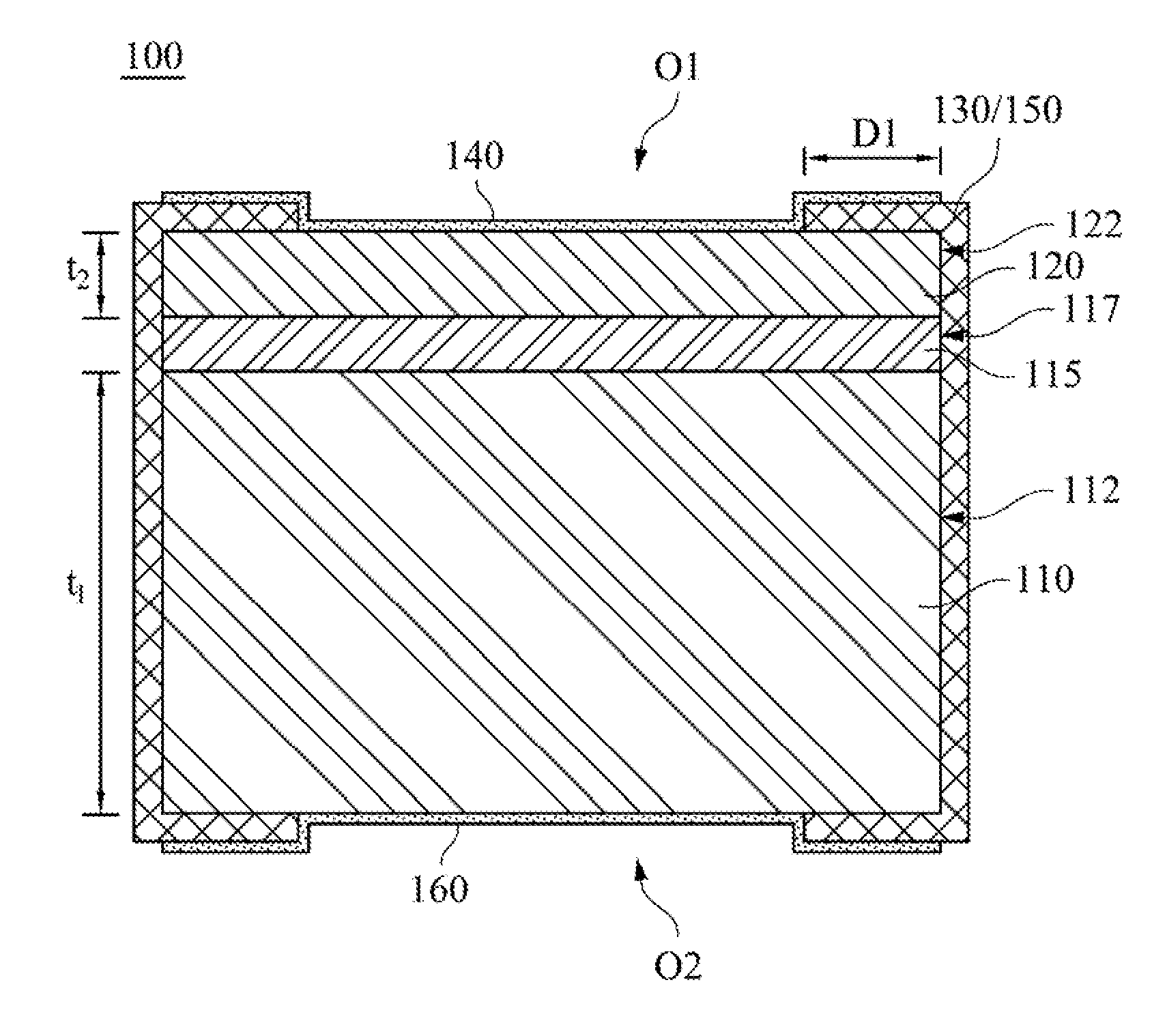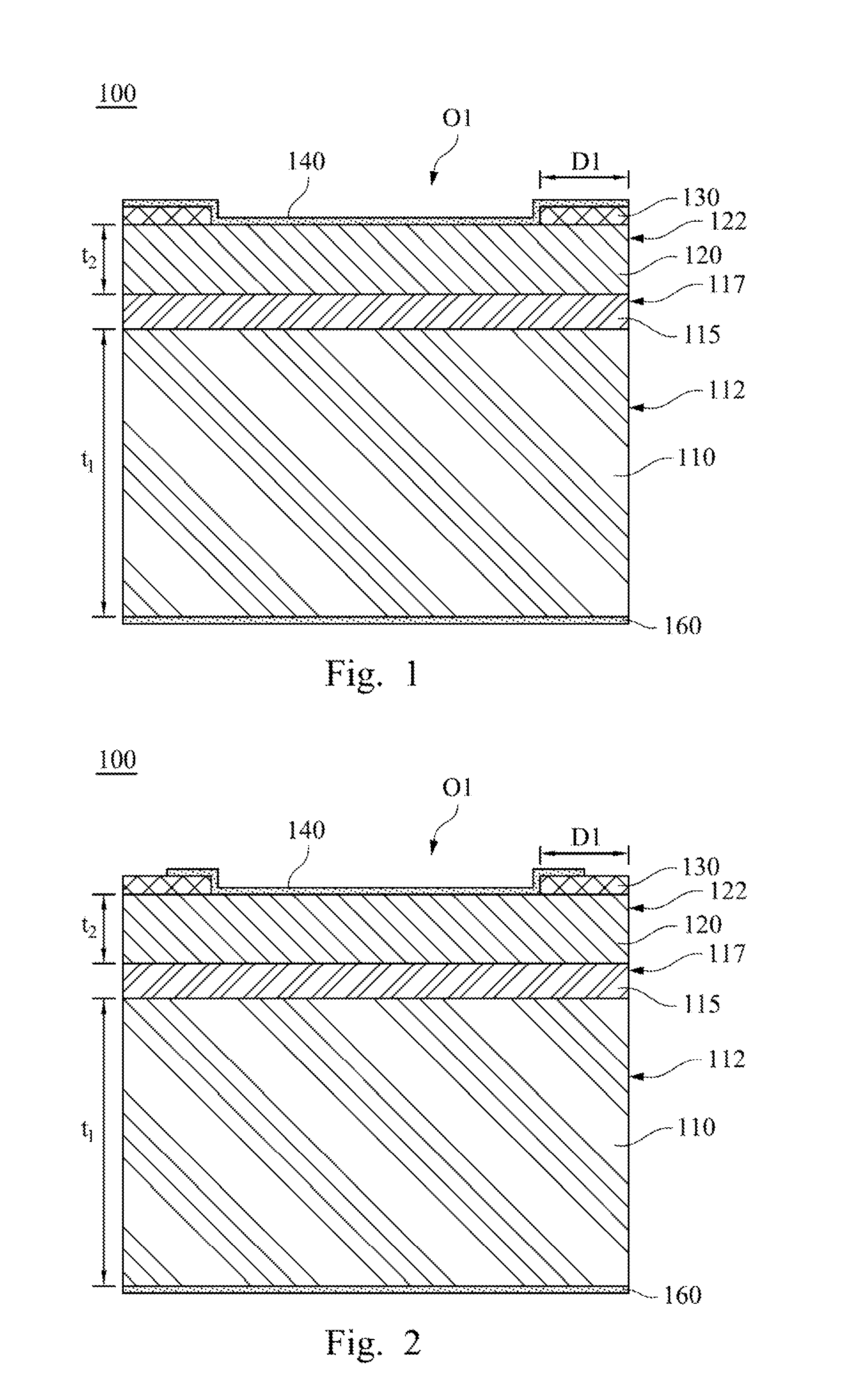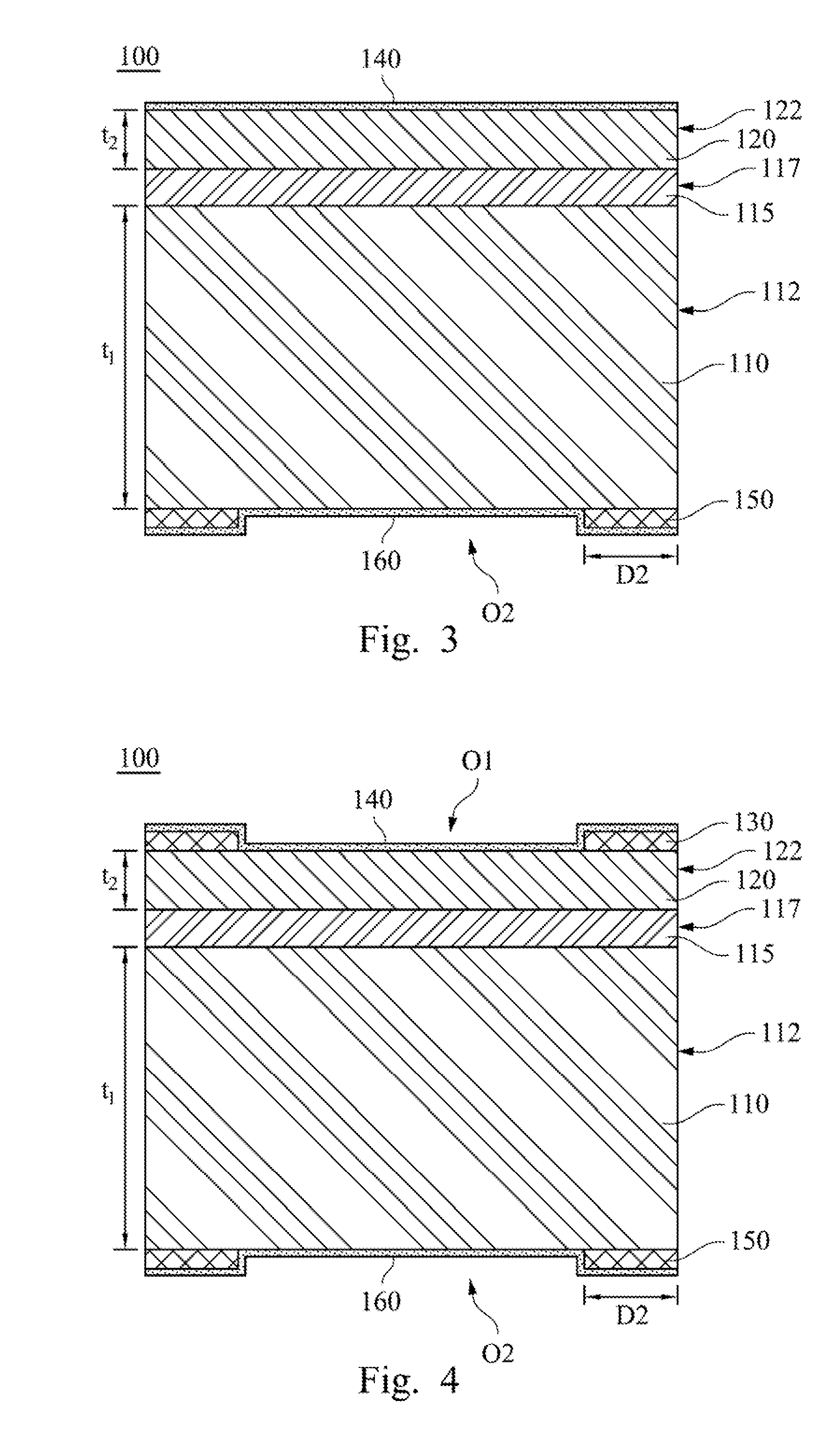Micro-light-emitting diode
a light-emitting diode and micro-led technology, applied in the direction of basic electric elements, electrical apparatus, semiconductor devices, etc., can solve the problems of reducing the light emission reducing the efficiency of the led, and a large number of surface and defect states, so as to increase the efficiency of the micro-led and reduce the effect of non-radiative recombination occurring at the side surface of the micro-led
- Summary
- Abstract
- Description
- Claims
- Application Information
AI Technical Summary
Benefits of technology
Problems solved by technology
Method used
Image
Examples
first embodiment
[0027]FIG. 1 is a cross-sectional view of a micro-light-emitting diode (micro-LED) 100 according to this invention. The micro-LED 100 includes a first type semiconductor layer 110, an active layer 115, a second type semiconductor layer 120, a first dielectric layer 130, and a first electrode 140. The second type semiconductor layer 120 is disposed above the first type semiconductor layer 110. The active layer 115 is disposed between the first type semiconductor layer 110 and the second type semiconductor layer 120. The first dielectric layer 130 is disposed on the second type semiconductor layer 120. The first dielectric layer 130 has at least one opening O1 therein to expose at least one part of the second type semiconductor layer 120. A first shortest distance D1 between an edge of the opening O1 and a side surface 122 of the second type semiconductor layer 120 is greater than or equal to 1 μm. The first electrode 140 is partially disposed on the first dielectric layer 130 and is ...
third embodiment
[0056]FIG. 4 is a cross-sectional view of a micro-LED 100 according to the forth embodiment of this invention. The difference between this embodiment and the first or third embodiment is that the micro-LED 100 of FIG. 4 includes both the first dielectric layer 130 with the opening O1 and the second′ dielectric layer 150 with the opening O2.
[0057]Other details regarding the micro-LED 100 of FIG. 4 are similar to the micro-LEDs 100 of FIGS. 1 and 3 and therefore are not repeated here to avoid duplicity.
fifth embodiment
[0058]FIG. 5 is a cross-sectional view of a micro-LED 100 according to this invention. Similar to the first dielectric layer 130 of FIG. 1, the first dielectric layer 130 of FIG. 5 partially cover a major surface of the second type semiconductor layer 120 distal to the first type semiconductor layer 110. The difference between the first dielectric layer 130 of FIG. 5 and the first dielectric layer 130 of FIG. 1 is that the first dielectric layer 130 of FIG. 5 further at least partially covers the side surface 122. In this configuration, the side surface 122 can be protected from moisture and mechanical damage by the first dielectric layer 130.
[0059]Other details regarding the micro-LED 100 of FIG. 5 are similar to the micro-LED 100 of FIG. 1 and therefore are not repeated here to avoid duplicity.
PUM
 Login to View More
Login to View More Abstract
Description
Claims
Application Information
 Login to View More
Login to View More - R&D
- Intellectual Property
- Life Sciences
- Materials
- Tech Scout
- Unparalleled Data Quality
- Higher Quality Content
- 60% Fewer Hallucinations
Browse by: Latest US Patents, China's latest patents, Technical Efficacy Thesaurus, Application Domain, Technology Topic, Popular Technical Reports.
© 2025 PatSnap. All rights reserved.Legal|Privacy policy|Modern Slavery Act Transparency Statement|Sitemap|About US| Contact US: help@patsnap.com



